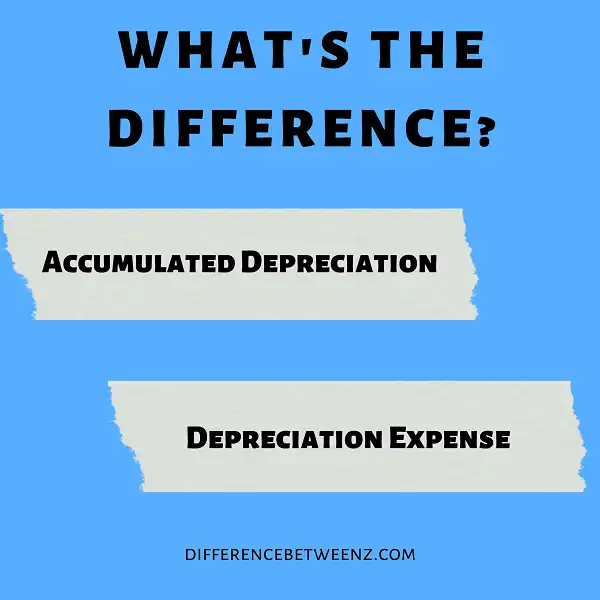Accumulated depreciation and depreciation expense is a common accounting terminology that is often used by accountants, business owners, and financial professionals alike. In this blog post, we aim to clarify exactly what these two terms mean and how they work in order to help you better understand the task of keeping accurate records for taxation purposes.
We’ll discuss the differences between accumulated depreciation and depreciation expense including when each should be applied as well as any necessary rules or regulations related to them. By reading this article, you will have a strong grasp on how both are actually accounted for on financial statements giving you confidence during tax season. So without further ado, let’s explore the world of accumulated deprecation/depreciation expenses!
What is Accumulated Depreciation?
Accumulated depreciation is an accounting term used to refer to the total amount of depreciation that has been recorded on an asset over time. It represents the portion of an asset’s cost that has been allocated from its original purchase price due to the impact of wear and tear, age, or obsolescence. Accumulated depreciation is important for accurate financial reporting because it reduces a company’s large equipment costs to their current value.
Accurately calculating these amounts can help businesses advertise true values for fixed assets when selling or renting out their holdings as well as accurately report earnings and underline areas within a business requiring improvement and optimization. Accumulated depreciation allows companies to identify how much they have invested in past assets – both tangible and intangible – so such investments can be compared against present spending habits.
What is Depreciation Expense?
- Depreciation Expense is an accounting concept used to allocate the cost of a long-term asset over its useful life. Depreciation expense allows companies to gradually “pay” for assets by spreading out their costs over several years.
- Depreciation methods vary based on how quickly the item’s value depreciates, and companies are allowed some flexibility in choosing which depreciation method works best with their own situation.
- Depreciation is a crucial aspect of taxes, bookkeeping, and other financial calculations, and responsible accounting requires regularly tracking Depreciation Expenses to continue growing the company’s profits in a sustainable manner.
Difference between Accumulated Depreciation and Depreciation Expense
Accumulated Depreciation and Depreciation Expense offer valuable insights into the financial operations of a business.
- Accumulated Depreciation records the total amount of depreciation that has occurred over the lifespan of an asset, while Depreciation Expense is simply the decrease in value of an asset captured for a single accounting period.
- Together, Accumulated Depreciation and Depreciation Expense help businesses track their current level of depreciation against their long-term goals, giving stakeholders an accurate picture of financial health.
It’s important to measure Accumulated Depreciation against Depreciation Expense to see if a company is making optimal use of its assets and investments.
Conclusion
The main difference between accumulated depreciation and depreciation expense is that Accumulated Depreciation is a contra-asset account while Depreciation Expense is an income statement. journal entry for recording the amount of asset cost that has been allocated to each accounting period since the date of purchase. In other words, it shows how much of an asset’s value has been used up during its useful life.


